By July, everyone is gardening in full swing. This is prime gardening time. It’s the month when harvesting kicks into high gear, too.
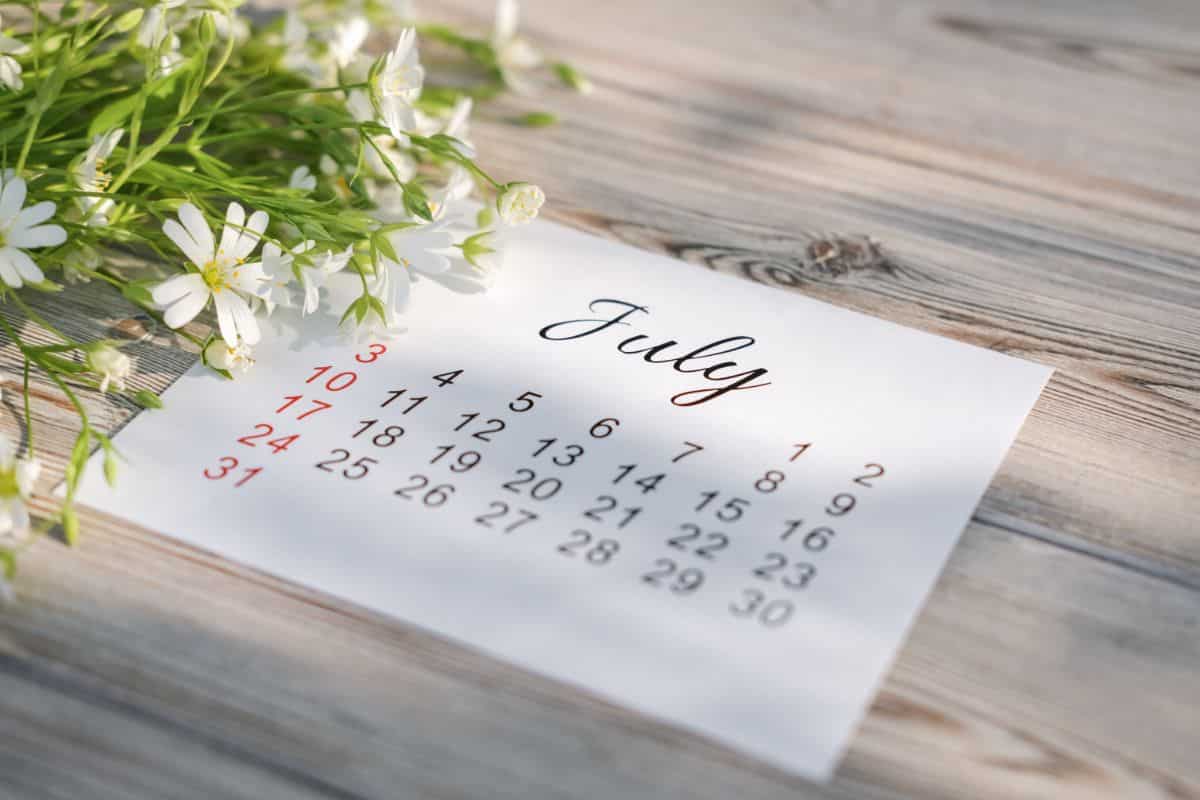
This is no time to become a gardening slouch. Understandably, though, some things can get lost and forgotten in the melee. Smart gardeners keep their eye on the prize and priorities and tend to all their garden’s needs so that small problems don’t turn into much bigger ones.
What are these prizes and priorities? Let’s take a look at the:
Top Ten Tasks for July Gardeners
Jump to:
- 1. Fill in the holes and replant missing plants.
- 2. Weed, weed, weed!
- 3. Maintain tied and trailing climbing plants.
- 4. Practice pollinator-friendly insect control.
- 5. Search for signs of disease.
- 6. Feed the pollinators.
- 7. Top dress and amend plants that need the boost.
- 8. Water as needed.
- 9. Start preserving the harvest!
- 10. Plan and plant succession crops.
- Reaping the Rewards of the Summer Garden
1. Fill in the holes and replant missing plants.

Stuff happens in the garden. Sometimes seeds don’t germinate well. Sometimes the weather isn’t very cooperative with seeds and small seedlings. Sometimes things rot before they grow or get dried out from a lack of moisture.
Sometimes little creatures like slugs, snails, insects, and larger wildlife like deer and rabbits nibble your tender, tasty young plants. Sometimes birds have a feast on your freshly planted seeds.
Whatever the reason, it’s not uncommon to have empty spots in your garden where seeds or plants either didn’t come up or just didn’t make it. If it’s only one or two out of many, you might decide to just forget it. But if it’s a significant percent of your crop (or if you can’t stand looking at the bald spots), there is still time in early to mid-July to fill in those spots.
Go back through your rows and slip in some replacement seeds or throw in a new transplant to fill in for a failed one. Maximize your space and efforts by filling in the blanks so you have a full harvest!
2. Weed, weed, weed!
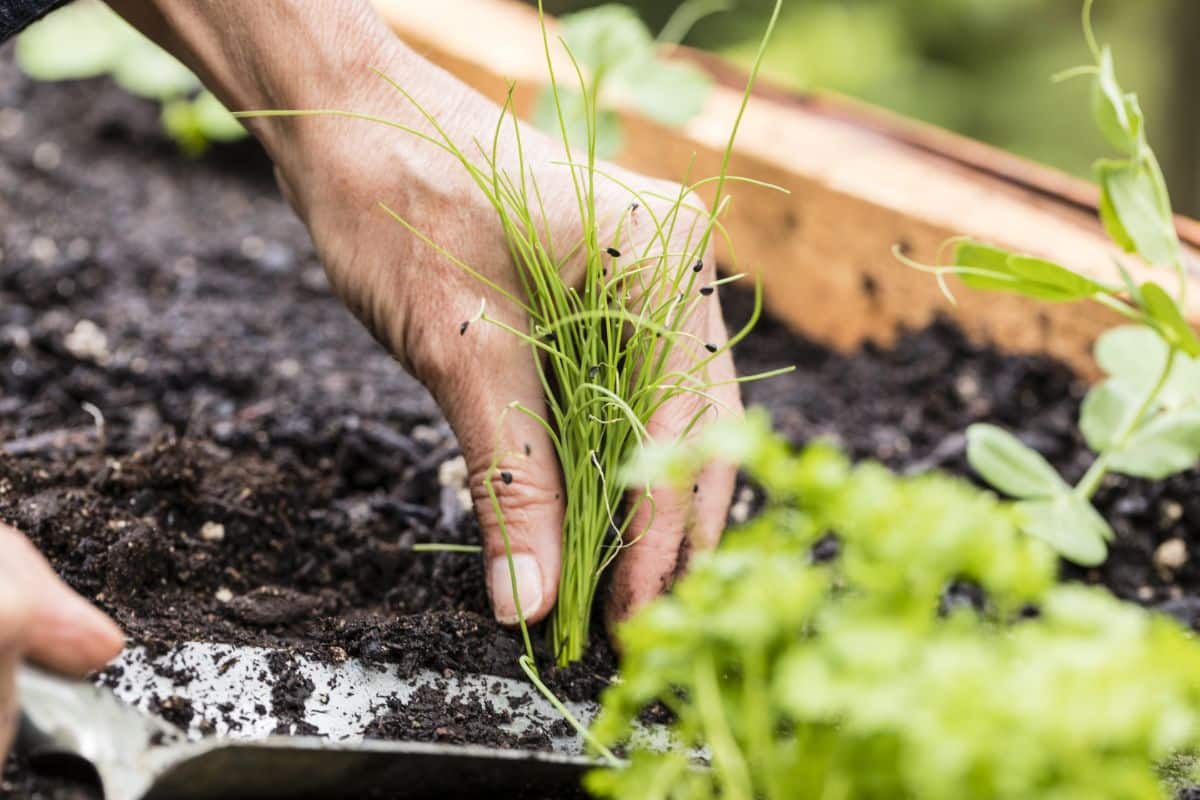
Though it’s tempting to skip it on those long, hot, dogdays of summer, you don’t want to let the weeding get ahead of you in July. This is prime, fast growing time for your plants. That means it is prime, fast growing time for weeds, too.
Keep a steady weeding routine throughout this month. This will ensure that your plants are not competing for valuable resources like nutrients, fertilizer, and water. It will keep airflow steady for healthier plants. It will give insects and disease spores fewer places to hide. And it will get those weeds out of there before they have a chance to go to seed and create a new generation.
But take heart! Good weeding now will reduce the weed crops in the coming months, as long as you get to them before they create that seed and start the new generation.
Weeding doesn’t need to be a hard or miserable task, either. Get yourself some good weeding tools, turn up the tunes or a favorite audiobook, and enjoy a half hour or so every day to keep the weeds at bay and keep your garden healthy, tidy, and thriving.
3. Maintain tied and trailing climbing plants.
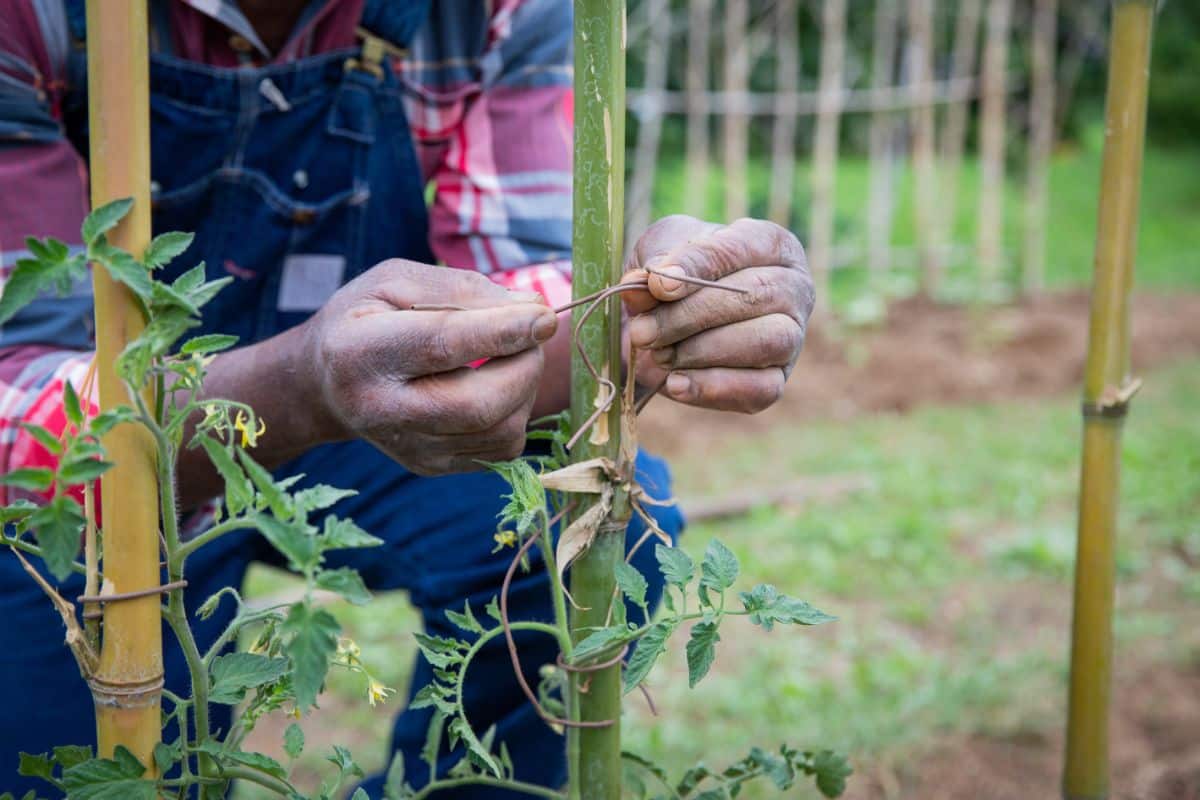
If you’re growing things like tomatoes, peas, pole beans, or growing other crops like squash, cucumbers, melons, pumpkins, or anything else on a trellis, don’t neglect the tying and training this month. This includes climbing and vining fruits (like grapes) and ornamentals and flowers, too!
Initially these plants get their first tie-up or train-up in June. But we have to remember that they will keep growing and will need to be continually tied or trained until the growth of the plant slows or stops. In the warm, prime growing conditions of July, these plants can grow fast! Some days it will feel like you can almost watch them growing!
Take a walk around your garden at least once or twice a week. Tuck in vining plants to keep them going in the direction and on the trellis system where you want them. Tie plants like tomatoes when they have six to eight inches of new growth.
4. Practice pollinator-friendly insect control.
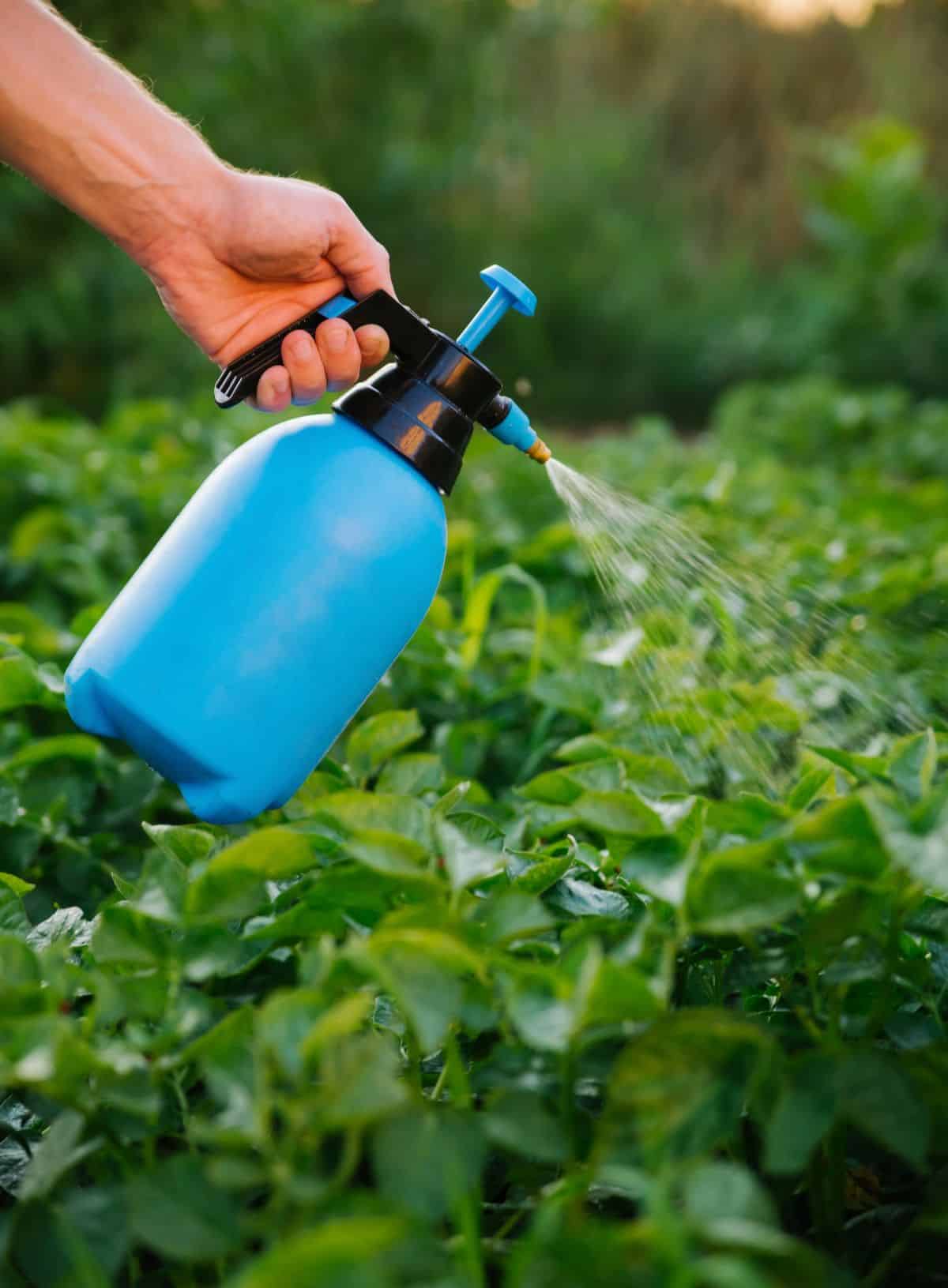
You’ll want to keep an eye out for insect infestation and damage this month. The first signs will often be the presence of eggs, larval worms or caterpillars, or damaged and eaten leaves and plant stems. You may find chewed or missing leaves, broken stems with holes in them, or stalks or stems that seem to break off and die overnight.
When you see these signs, you’ll know it’s time to act. Address insect issues at the first signs. Odds are that they are already more present than you think they are.
Many harmful garden pests can go through several generations in a season, so it’s important to get them under control with the first generation so that populations don’t explode beyond control.
It’s very important to remember one thing, though—a lot of the products and processes of eliminating bad bugs in the garden will also eliminate good bugs, pollinators, and beneficial insects. This includes even many organic and chemical-free options. And we need these good guys. In fact, we need to invite them in and encourage them to visit our gardens daily.
Does this mean you have to abandon your garden to the bad bugs to save the good? Not at all.
It just means that we have to take pains to know what we are using, when we should use it, and how much, how often, what growth and blossom stage, and what time of day it is safe to apply our products. We can work with pollinators and other beneficial insects as we take steps to control the damaging garden insects and pests.
Read your product’s label descriptions and directions for safest use. Know what types of pests they do or do not effect. Choose targeting product like BT when possible. And do a little research with some reputable online sources to go beyond the (often vague) information provided on the product’s label.
Practice good pollinator-friendly pest control for a happier, healthier, garden!
5. Search for signs of disease.
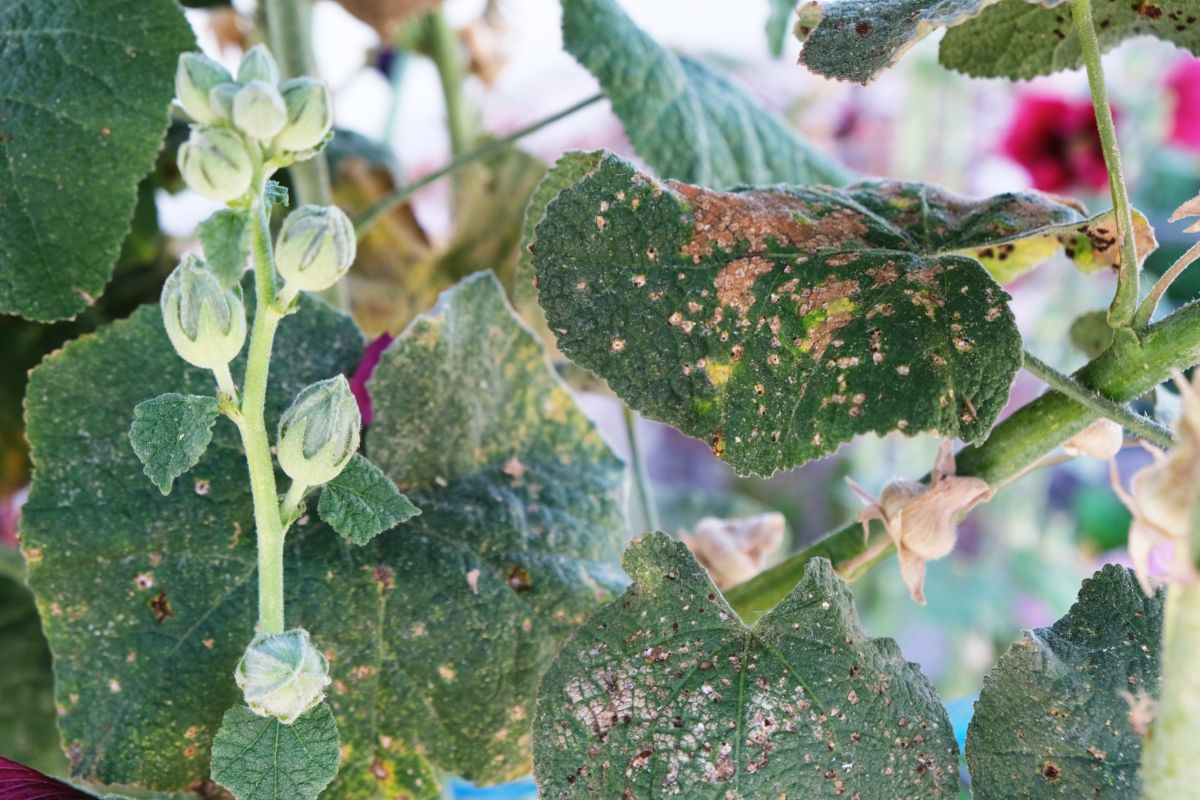
Just as with insects and pests, you want to get the earliest possible handle on dealing with diseases in your garden. July, with its high heat and humidity, often means that fungal diseases like wilt and blight take hold. This is especially true if you are experiencing an unusually wet year and high rains.
Whenever you are in your garden, keep eyes open for signs of disease. They might include white or grayish films, powdery-looking coverings that spread out over leaves, circular dark spots, rust-like lesions, yellowing or wilting leaves or stems, breaking plants, or dying back.
Many of the signs and symptoms of plant disease look a lot like the signs and symptoms of insect infestation. There is good reason for this. Insects are often vectors and spreaders of disease. As they travel from plant to plant, they take along infectious spores and pathogens with them.
For this reason, it is wise to combine insect and disease watch and control issues as they present themselves. Dual-purpose organic solutions such as neem oil are a good idea. (Neem is a natural product that can be used as both a preventative and a treatment and treats fungal plant diseases as well as kills insects but is easy to manage to avoid killing pollinators and keep your garden pollinator friendly.)
There are many good DIY, homemade solutions to help manage powdery mildews and fungal diseases, too. Milk sprays and baking soda treatments are two options.
6. Feed the pollinators.
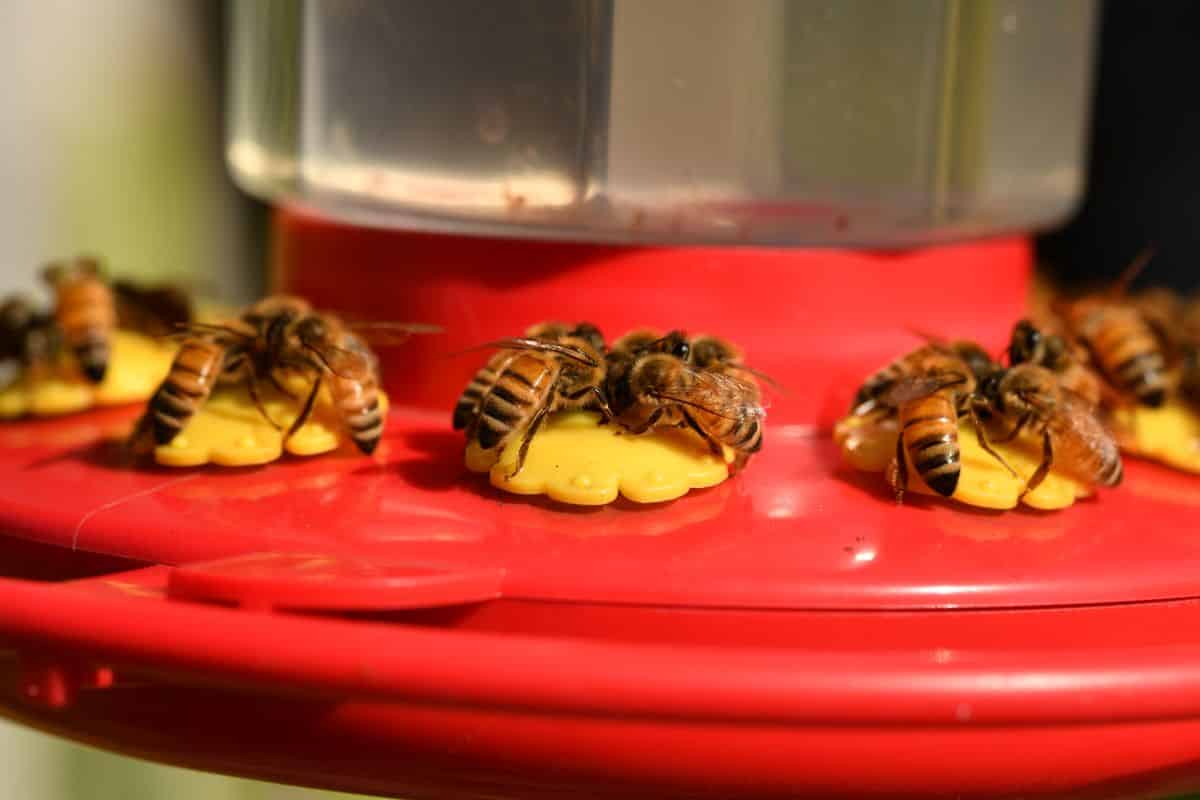
You probably do not need to be told that pollinator populations of bees, butterflies, bumblebees and more are on the decline. The absence of pollinators in your garden can spell trouble for your crops and harvests. Some crops will be more impacted than others, depending on how they pollinate.
Continue to feed the pollinators this month as your plants come into bloom. This will help tip the pollinating scales in your favor. It may not be too late to plant some flowers or wildflowers in your garden. Look to both the present and the future and plant some long-blooming pollinator-friendly perennials.
If you need to get pollinators visiting now and you don’t have time to wait for plants to flower or seeds to grow, bring in some blooming container plants and bright flowers. Hang hummingbird feeders which hummingbirds, bees, and butterflies will enjoy.
Even providing a bird bath of water with stones as resting and drinking places will help encourage bees and butterflies. If you have few water sources around you or if you are experiencing a dry year with limited rains, this is especially helpful—bees and butterflies need watering holes, too! This is why you’ll often see them frequenting your backyard swimming pool or garden ponds.
7. Top dress and amend plants that need the boost.
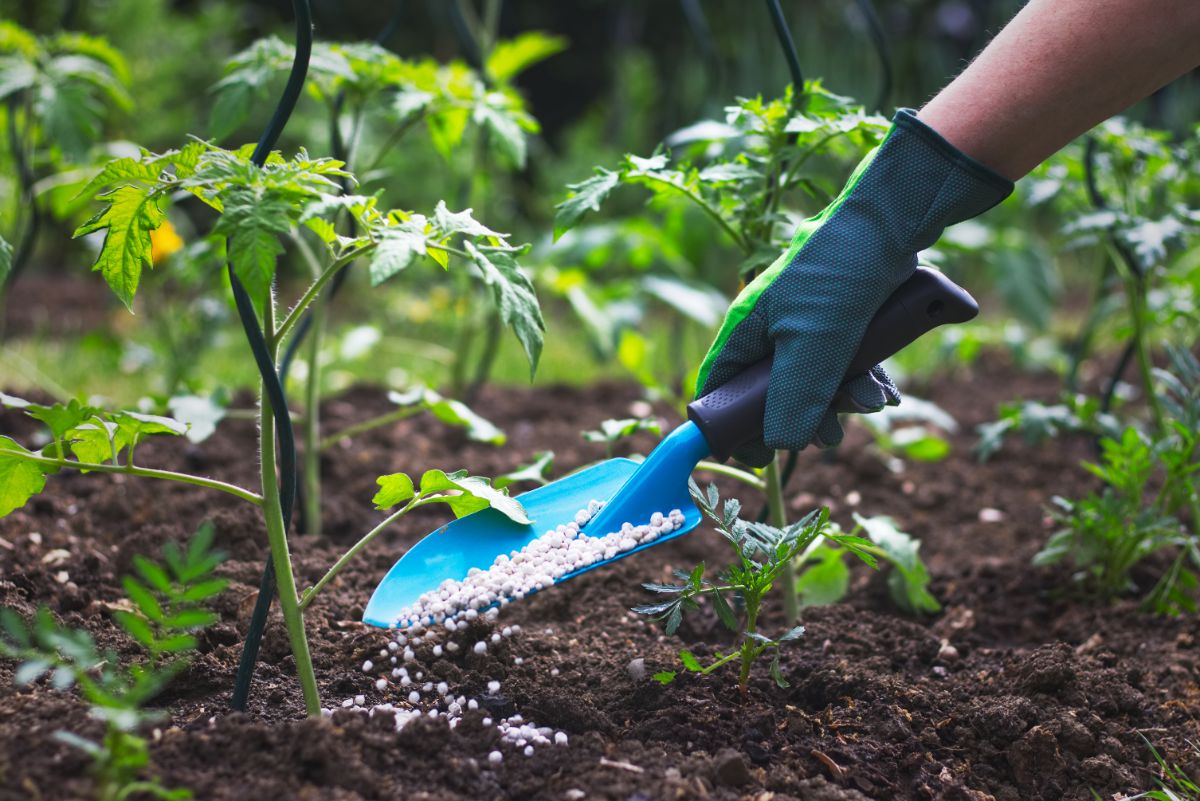
It’s often wise to give a top-dressing of a general garden fertilizer about a month after the plants have been planted, and/or when the plants start to blossom and produce fruit (or vegetables). July is, in general, a good time for this.
Top- or side-dressing plants may also be called for on a more frequent basis if you have poor soil, if your soil has difficulty holding nutrients, or if rains have been heavy and washed too many nutrients out of the soil (the symptom of this is often yellowing, slow-growing plants).
Compost also makes a good, soil-building top-dress fertilizer and there are other amendments that can be helpful when plants start to blossom and produce, too. For example, Epsom salt can provide a good magnesium boost to peppers and tomatoes that can increase production and/or help them hold onto their fruits to grow to harvest size.
8. Water as needed.
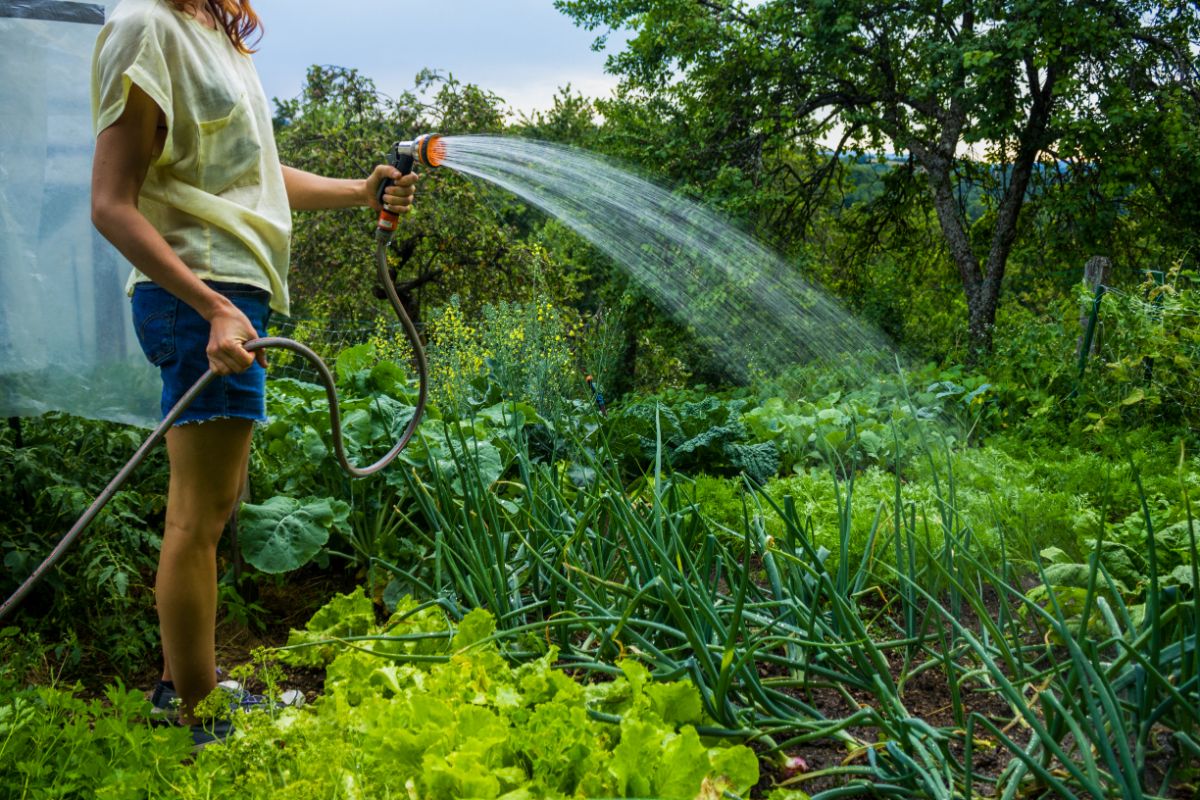
It’s important to keep up with regular watering in the hottest months of the year, but it’s also important to manage water according to your garden’s needs and not a strictly scheduled regime.
For the most part, if you are getting an inch of rain each week that will be plenty for well-established and rooted plants. If you have plants with more specific water requirements, it's good to know that and water according to their needs.
A smart move is to put a rain gauge in your yard or garden. If you don’t have or don’t want to spend the money on a rain gauge, an empty tuna can (or similar sized can) placed at the top of a row is perfect—it's about an inch deep, so if it fills up by the end of the week, you’ll know your garden is getting enough water.
Check your gauge (whether purchased or make-shift), see how much water Mother Nature has provided for you, and then make up the difference with soakers hoses (ideally) or sprinklers.
9. Start preserving the harvest!
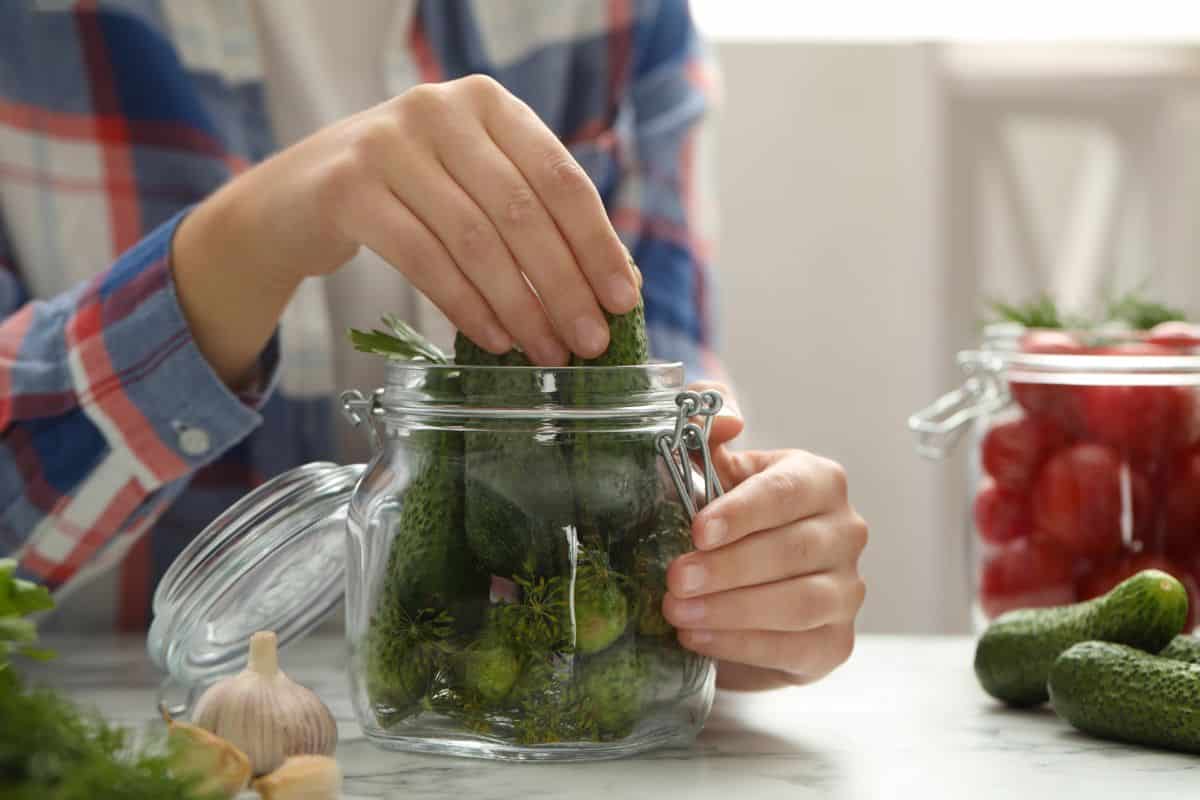
There’s nothing quite like home-grown, garden-fresh fruits and vegetables. A close second would be preserved fresh fruit and vegetables that you can enjoy in the doldrums of winter.
If you’ve never saved and preserved your harvests before, you’re surely in for a treat when you start. You’ll be amazed at the difference home-grown preserved foods deliver over grocery items—preserved or “fresh”!
There are several great options for preserving your harvests for future use. Chief among them are pickling, canning (also called jarring, depending on where you live), freezing, cold storage (such as root cellaring), and dehydrating (aka drying).
Which method is best?
Truth be told, they’re all very good and the best preservation method for you is the one that you enjoy the most. But to be really honest, there isn’t one single best method. Some methods are better for certain types of fruit or vegetables than others.
Another factor to consider is what kind of preserved foods you enjoy eating and using in cooking. Check out these pros and cons of freezing, dehydrating, and canning to help you decide how you will preserve your harvests.
10. Plan and plant succession crops.
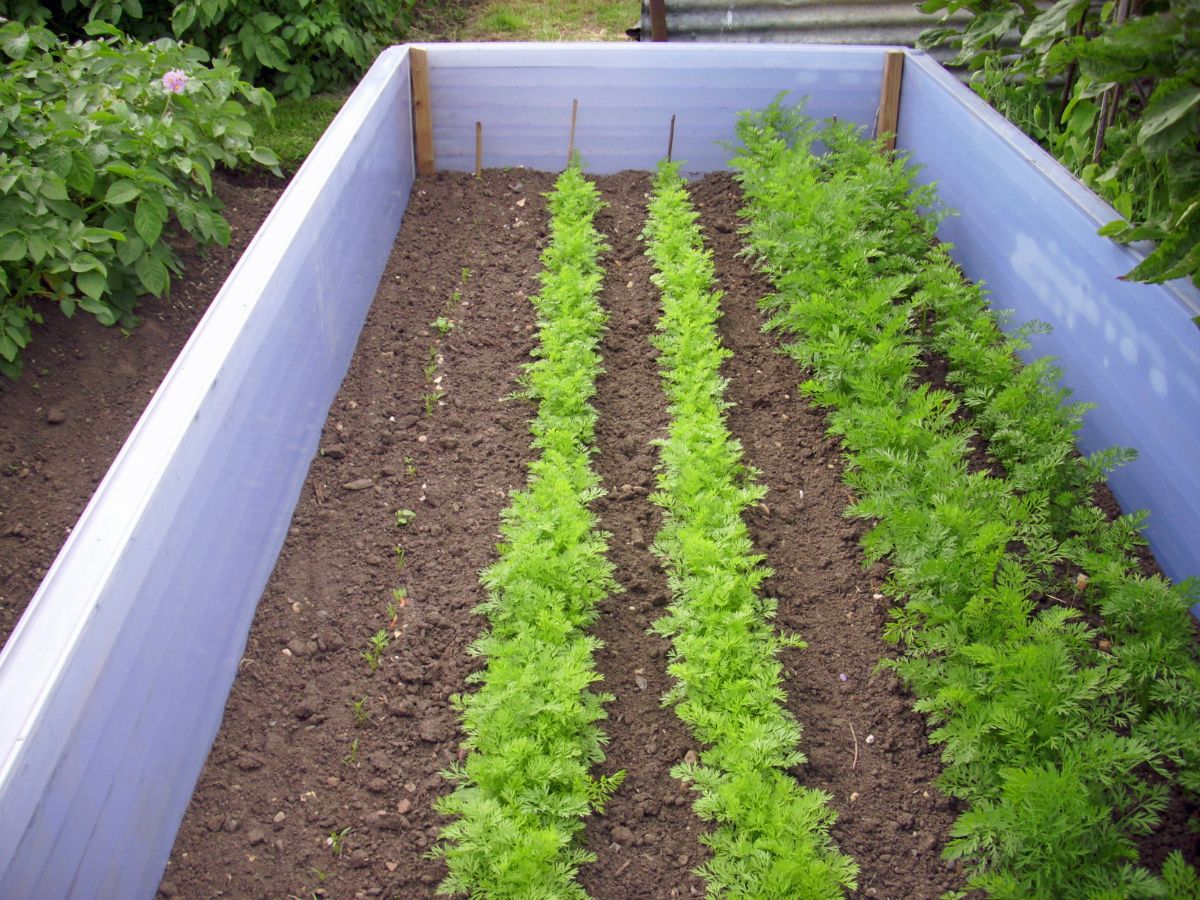
By July, you’re bound to have used up some of the earlier and short-growing vegetables in your garden.
The first round of lettuce, spinach, and greens is often spent. Radishes and peas are likely to have run their course or to be close to doing so. If you planted root crops like beets and carrots for an earlier harvest they may have been pulled by July, too.
The wonderful thing about short-season vegetables is that we can succession plant these crops for a continuous harvest. This maximizes space and use and makes it possible to grow a lot of food even in a small amount of space.
You can succession plant the same crop if you want more of the same (which is often the case with greens that are eaten fresh). You can also plant a different crop so that you can get more variety out of a limited amount of time and space.
Another option is to succession plant at intervals, which means that you stagger your planting on a seven- to twenty-one-day cycle (whatever interval within that timeframe that nworks for you) so that you have the same crop or vegetable growing at different stages and you can harvest and enjoy fresh vegetables throughout the season. A good example of this would be planting lettuce once each week so that every week you have fresh lettuce coming in.
If you haven’t thought about succession planting for this growing year, there’s still plenty of time. Look at what is likely to finish in the weeks to come. Look at the crops that you have already harvested and where empty space is available. Consider growing time and days to harvest, what more you’d like to get out of your garden, and what seed you have on hand or that you can purchase soon enough to plant.
Similarly, think ahead to your fall garden. When people talk about fall gardens, it doesn’t refer as much to things that you will plant in the fall as it does to vegetables that you will harvest in the fall. July might be a bit on the early side for planting a fall-harvest garden, but it is not too early to start thinking about it and planning for one.
If you’re really well organized, July is the best time to buy or order seeds for a fall harvest garden. That way you’ll have the seed on hand when it’s time to plant, won’t waste valuable growing time waiting for deliveries, and you can often get some good deals on seeds as garden centers start to mark down and clear out their stock.
One final note on fall harvest gardens: if you are starting your plants from seed and planning to transplant them (much as we do with initial spring crops), this is the time to do that. Cole crops like cauliflower, cabbage, and broccoli can be grown from transplants if they have a five or six week start and are then planted in August.
Reaping the Rewards of the Summer Garden
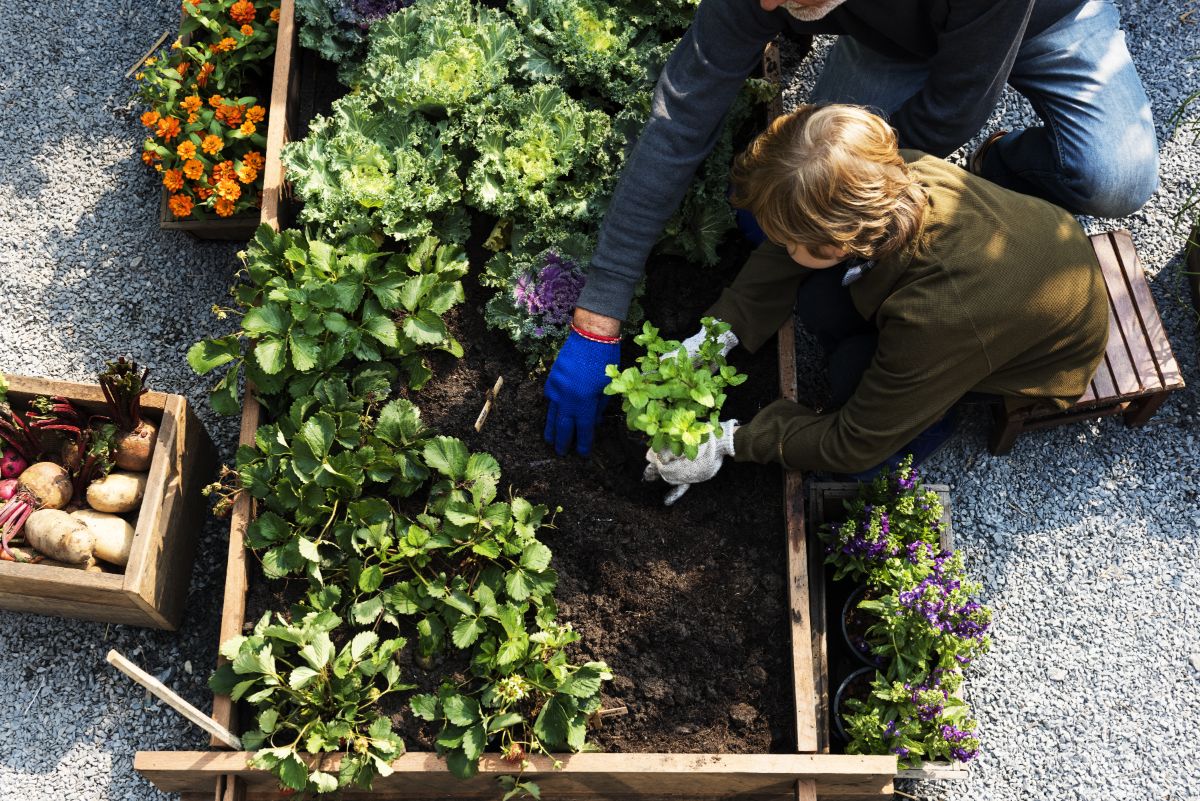
Certainly, there is plenty to keep gardeners busy in July. As busy as the garden can be, and as overwhelming as it can seem at times, don’t forget to enjoy your time in your garden, too. All too soon the days will be shortening, the breezes will turn cooler, and frost will be nipping at the heels of our plants.
A good plan, good management, and a regular routine will have you and your garden happier and healthier, and ready to enjoy the real fruits of your labors.

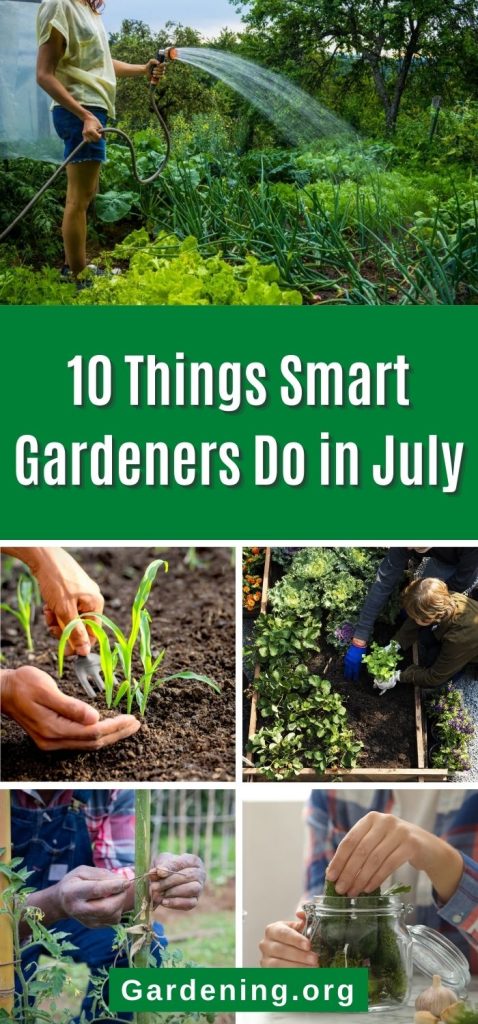
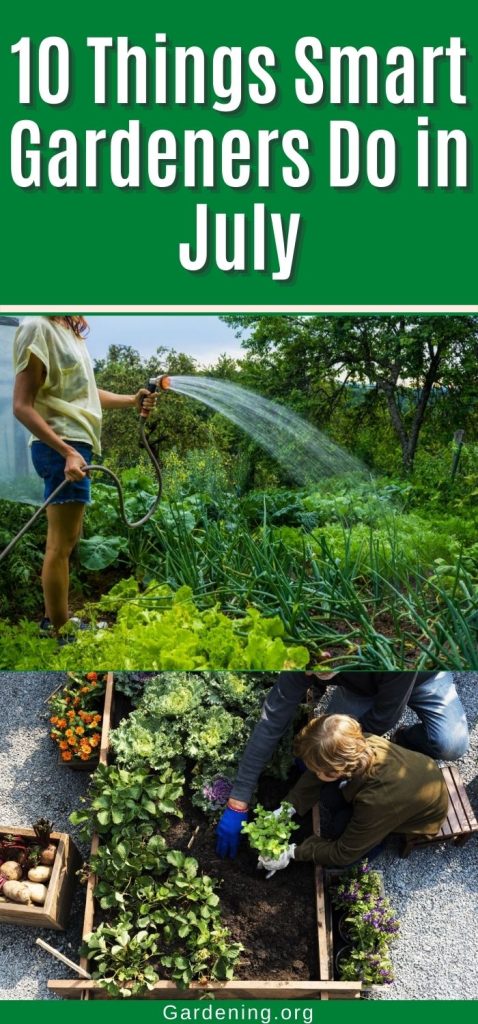
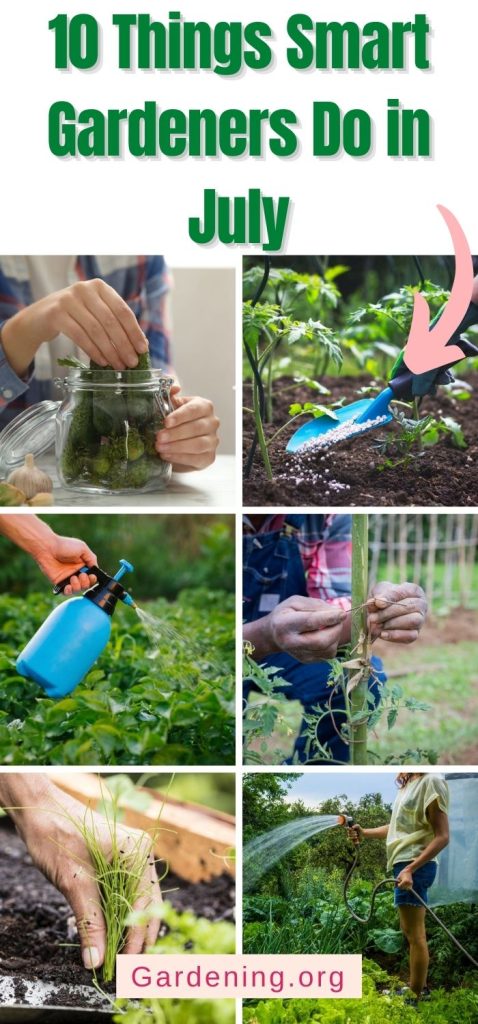
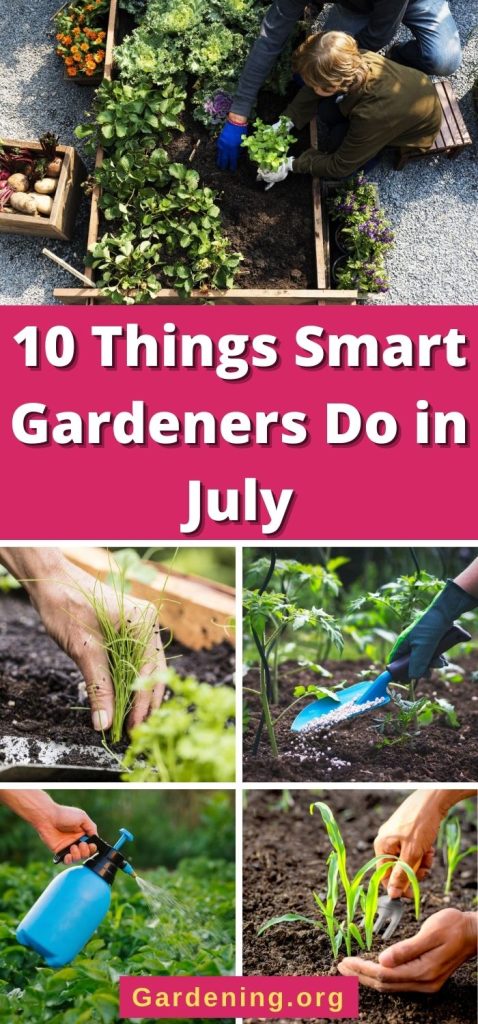




Helen
I usually always like these articles, but then realise they are only catered for the USA only.
Obviously, here in Australia, it's winter in July.
It would be good if you could include other hemisphere or just upload your winter list for us living down under.
However your articles contain very good information.
Bonnie Vallery
I live on the Mississippi Gulf coast with tropical weather and 4 growing seasons. Does the same advice apply here?
Joan
These are the practices I live by. I would say they will work for you, but amend the timing. Instead of July, you may be doing this in late May.
Mary Ward
Some of these are practices that span more than one month, but that are included here to highlight their importance in July. Also, of course, it will depend on where you live. Thanks for stopping in!
Mary Ward
Of course everyone should adjust for their growing location, but for the most part, yes. You may need to hold off on some succession planting if it is too hot and/or dry. A regular weeding, disease, and bug patrol is always called for whenever things are growing! Almost all seeds (with a few exceptions like onions and alliums, parsnips, and a few others) last for several years. Even alliums last a year. So buying seeds on clearance and stocking up for the next planting is a good idea. Save money and be ready 🙂 Thanks for reading!